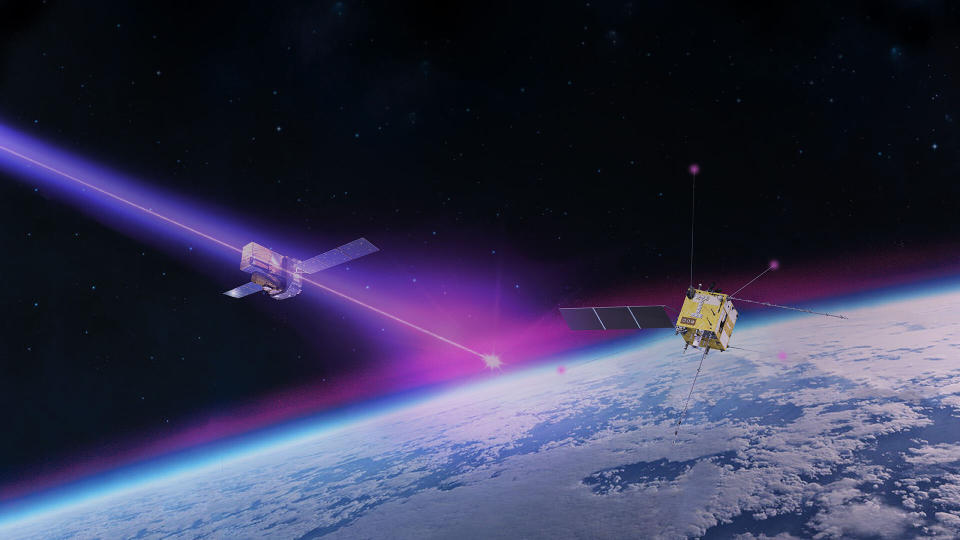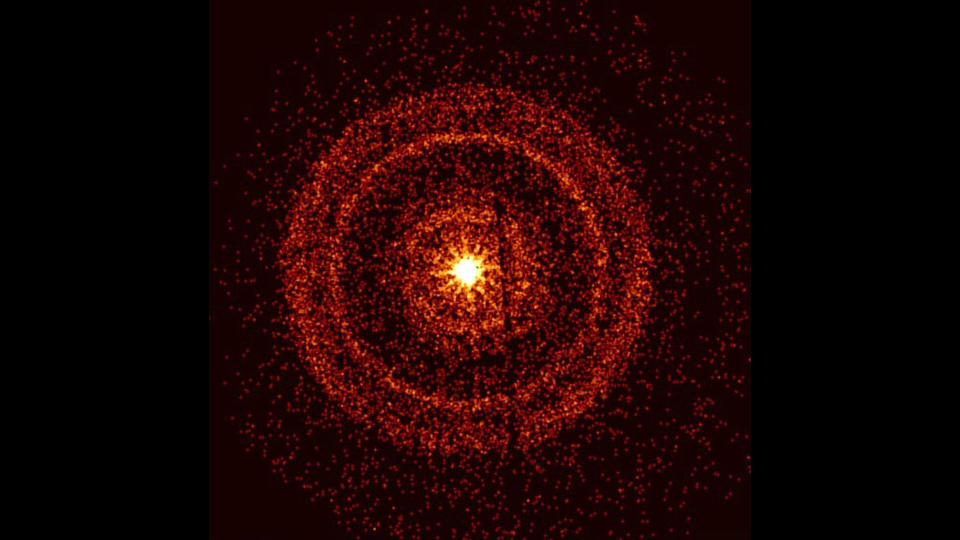NASA has officially halted scientific observations conducted by the Neil Gehrels Swift Observatory.
Do not worry.
The space telescope, which observes some of the most powerful bursts of radiation from the universe’s most violent cosmic events, known as “gamma-ray bursts,” is only temporarily out of service. NASA put Swift into safe mode on March 15 due to “degraded performance” of one of the three gyroscopes the space telescope uses to direct itself to astrophysical sources astronomers want to study.
NASA said the Swift team had been tracking increasing noise in the gyroscope for several months. By mid-March, the gyroscope’s performance had deteriorated so much that the spacecraft was struggling to lock onto the star tracker and thus perform successful scientific observations.
Relating to: James Webb Space Telescope finds rare heavy chemical element from ‘kilonova’ explosion
Swift is technically designed to continue meeting mission requirements in the event of one gyroscope failure, but the onboard flight software needs a patch for the satellite to function properly in dual-gyroscope mode.
“We are working to download and install this patch, which we expect will return the spacecraft to full functionality as quickly and safely as possible,” NASA wrote on the Swift website. “Scientific observations are expected to be very limited until the patch is successfully implemented.”

How does Swift rock THE BOAT with her powerful observations?
Swift has been serving NASA and observing the high-energy universe for almost 20 years since the space agency’s launch on Nov. 20, 2004, from the space agency’s historic Cape Canaveral Air Force Station Complex 17-A.
Its main role is to observe GRBs, which are extremely intense flashes of gamma rays, the highest energy form of light. GRBs can last from just a few milliseconds to several hundred seconds. This means Swift needs to inform ground telescopes about the GRB extremely quickly so they can focus on the afterglow.
To solve the mystery of what events initiate GRBs, such as the collapse of a massive star, the birth of a black hole, or the collision and merger of neutron stars, Swift examined the universe in visible, ultraviolet, X-ray, and gamma-ray light.


One of Swift’s most remarkable discoveries during his two decades of activity is a GRB scientist affectionately nicknamed “The Brightest of All Time” or “BOAT.”
BOAT could be the most powerful space explosion known since the Big Bang.
Swift spotted BOAT on October 9, 2022, and the eruption immediately stood out from other GRBs due to its extreme nature. More formally designated GRB 221009A, BOAT was first seen as an extremely bright flash of high-energy gamma rays; This initial emission was followed by a fading glow at many wavelengths of light.
BOAT was at least 10 times more energetic than other GRBs seen by Swift, and the photons detected as part of this GRB had more energy than particles accelerated to near-light speeds at the Large Hadron Collider (LHC), humanity’s largest particle accelerator. was carrying. BOAT is believed to have been ejected by a star with a mass equivalent to 30 suns, which reached the end of its life and went supernova towards the constellation Sagitta.
This explosion occurred so far away that its light had been traveling for 2.4 billion years before Swift discovered it historically.
RELATED STORIES:
– Boom! Astronomers watch biggest explosion of space rage in 3 years
— Have scientists solved the mystery of the super bright ‘cow’ exploding in space?
— Scientists witness massive X-ray explosion from a white dwarf for the first time
Swift may be an “old dog” in terms of space telescopes, but that doesn’t mean it can’t learn new tricks.
For example, in September 2023, NASA revealed that its spacecraft had detected a black hole in a galaxy approximately 500 million light-years away, constantly gnawing away at a sun-like star. The event was named Swift J0230, and its observation was made possible thanks to a new way of analyzing data from the satellite’s X-ray Telescope (XRT). This represented a completely new era in Swift science that astronomers hoped could soon be continued.
“Swift’s hardware, software and the skills of its international team have enabled it to adapt to new areas in astrophysics over its lifetime,” Phil Evans, an astrophysicist at the University of Leicester in the UK and a long-time member of the Swift team, said last year. . “Neil Gehrels, the mission’s namesake, oversaw and encouraged many of these transitions. Now, with this new capability, even more amazing science is being done.”
Scientists will undoubtedly be eager to see this pioneering space telescope continue its operations and see what new high-energy aspects of the universe it will reveal next.